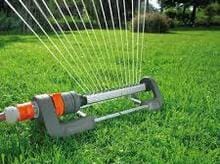irrigation system for gardens
An irrigation system for gardens refers to a method of providing water to crops and plants in a controlled and efficient manner. The goal of this system is to deliver water directly to the roots of plants to promote growth and avoid waste. There are several types of irrigation systems, including surface irrigation, sprinkler irrigation, and drip irrigation. Each of these methods has its own advantages and disadvantages, and choosing the right system depends on the specific needs of the garden.
The benefits of using an irrigation system in a garden are numerous. Firstly, it helps conserve water, as the water is delivered directly to the roots of plants, reducing the amount that is lost through evaporation and runoff. Secondly, it saves time, as the system can be set to water plants automatically, freeing up time for gardeners to focus on other tasks. Thirdly, it can help to avoid water waste and promote growth, as the system delivers water in a controlled and consistent manner.
However, there are also some potential risks associated with using an irrigation system in a garden. Firstly, if the system is not installed correctly, water may be delivered to the wrong plants, or the pressure may be too high, causing damage to the roots. Secondly, if the system is not maintained properly, it may become clogged, reducing the amount of water that reaches the plants. Thirdly, the use of an irrigation system may also increase the risk of disease, as stagnant water may encourage the growth of bacteria and fungi.
To get the most benefits from an irrigation system in a garden, it is important to choose the right type of system for the specific needs of the garden. For example, a drip irrigation system is ideal for small gardens, as it delivers water directly to the roots of plants in a controlled and efficient manner. A sprinkler system is better suited for larger gardens, as it covers a larger area and can be used to water a variety of plants.
It is also important to maintain the irrigation system regularly to ensure that it is functioning correctly and to prevent any damage from occurring. This may involve cleaning the system to remove any debris, adjusting the pressure to avoid damage to the roots of plants, and checking for leaks.
In addition, it is important to monitor the water usage of the irrigation system, as excessive water usage can be both wasteful and expensive. This may involve installing a water meter to track the amount of water being used, and adjusting the system accordingly.
Finally, it is important to consider the cost of installing and maintaining an irrigation system, as this can vary greatly depending on the size of the garden and the type of system being used. However, despite the initial costs, an irrigation system can save money in the long term by reducing water waste and promoting growth.
In conclusion, an irrigation system for gardens is a valuable tool for promoting growth, conserving water, and saving time. However, it is important to choose the right type of system, maintain it regularly, monitor water usage, and consider the costs associated with installation and maintenance. By following these guidelines, gardeners can maximize the benefits of an irrigation system and achieve a thriving, healthy garden.
You have one bigger or less big field with plants or grass. At one time, this soil may want some water to fight with the sun. The solution is at the cloud with the rains, but also, you could try the irrigation system anytime.
SPRINKLERS:
Thus, the smaller ground is good to choose a lawn sprinkler device or a hose-end sprinkler system. A lawn sprinkler system can be permanently installed, as opposed to a hose-end

sprinkler, which is portable.
Sprinkler Under Ground systems are installed in residential lawns, in commercial landscapes, for churches and schools, in parks and golf lawns. These hose-end sprinklers can have various types of water-distribution functionality, such as oscillating, sweeping, pulsating, and arm whirling.
Home lawn & garden sprinklers vary widely in their size, cost, and complexity. They are impact sprinklers, periodic sprinklers, drip sprinklers, underground mechanical device systems, and moveable sprinklers.
Permanently installed sprinklers could usually operate on automatic processes. These varieties of systems typically are often programmed to mechanically begin.
Portable sprinklers are often temporarily placed on lawns if extra watering is required or if no permanent system is.
These are usually connected to an outside hydrant and are placed for a brief amount of your time.
So you will find the most used: